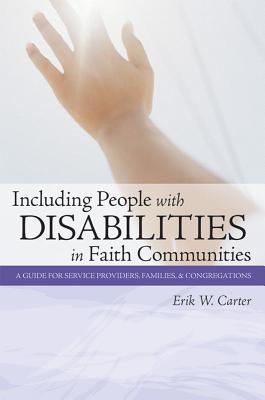A congregational community is an ideal place to share and strengthen faith, form lasting relationships, and develop special gifts and talents. Too often, though, people with developmental and other disabilities lack the opportunities and supports to fully participate in the life of their faith community. That (TM)s why families and service providers need to read this groundbreaking guidebook--and share a copy with congregations that want to become places of welcome and belonging for people with disabilities.
Bringing his practical ideas to life with anecdotes, quotes, and examples of successful strategies, Erik Carter helps readers
- reflect on how welcoming their congregation is--and could be--for people with disabilities and their families
- articulate and pursue a bold vision of inclusion throughout their congregation, community, city, or state
- take steps to break down attitudinal, architectural, programmatic, and other barriers to inclusion design appropriate, inclusive religious education programs for children, youth, and adults
- learn how service providers can actively support the spiritual preferences, strengths, and needs of people with disabilities
To make inclusion work in any faith community, this how-to book gives readers workable strategies and photocopiable forms for identifying oeindicators of welcome, encouraging community outreach, and gathering important information about the support needs of people with disabilities and their families.
